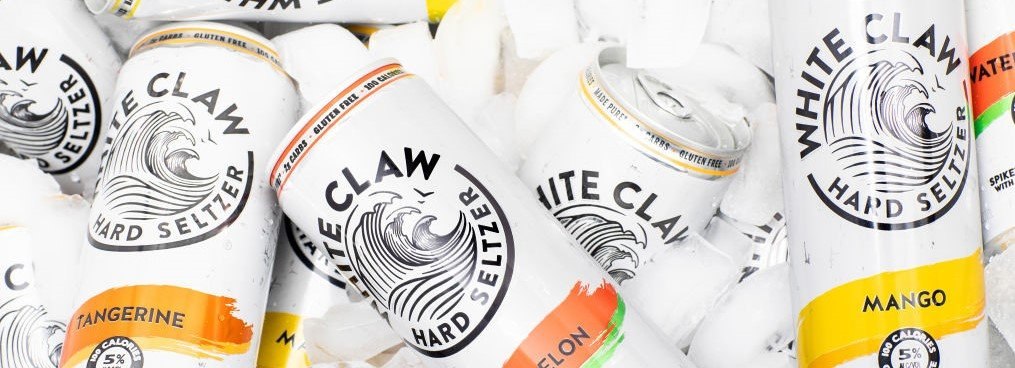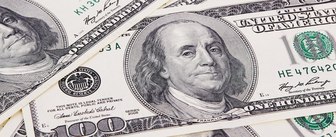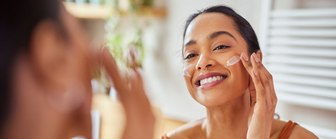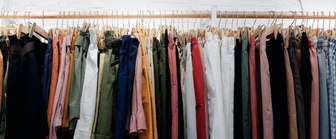Once the weather got hot, hard seltzer sales got hotter among millennials. In fact, White Claw, Truly and Bon & Viv outsold the top six beer brands combined during the past 30 days, per YouGov data.
To understand the hard seltzer sector, we must first better understand the millennial drinker (born between 1982-1999).
For starters, millennial drinkers are more likely to select flavored malt alcoholic beverages, such like hard lemonade and prepared cocktails, than other demographics. On top of that, they’re also consuming much more flavored sparkling water than other Americans.
This demographic is also more likely to be health conscious and body conscious. Specifically, they place a greater emphasis on counting calories, physical attractiveness, exercise and physical activity, than other demographics. White Claw, for example, contains only 100 calories, possesses 2g of carbs, is gluten free and is largely carbonated water, alcohol and natural flavors.
But most importantly, they really like to try new drinks. Per a poll of more than 2,800 millennials during the past year, 60% of this demographic said they enjoyed trying something new.
This has been bad news for the traditional alcoholic beverage categories. For example, wine consumption among the general US public is decreasing, YouGov data shows. Only 21% of Americans say they drink wine at home or at someone else’s home at least once a month, a figure down from 26% in 2018. The percentage of Americans drinking domestic beer at home is also down three points to 22% in the same timeframe.
White Claw continues to dominate as competition storms the wall
America’s beermaking behemoths don’t generally sit idly by while new offerings take a sip from their pint of the market share. Many of the major players have released hard seltzers of their own — many extensions of their valuable tried-and-true brands like Bud Light Seltzer. Some have launched or purchased stand-alone brands, such as AB InBev’s Bon & Viv or Vizzy by Molson Coors.
While competition is getting fierce, American millennials who drink are still reaching for White Claw — the best-selling hard seltzer brand. In fact, Mark Anthony Brands’ White Claw was more popular than every beer brand with the exception of Bud Light and Corona. YouGov data shows nine percent of American millennials over the age of 21 have purchased a White Claw beverage in the last 30 days, just behind Bud Light (11%) and Corona (11%) — both of which also have seltzer sub-brands. Truly, owned by Boston Beer Company, is a strong number two in the hard seltzer category.
Despite popularity among millennials, all of the hard seltzer brands still have a lot of work to do to capture the attention of baby boomers: only 25% of boomers who drink are aware of White Claw and only about 1% of them have purchased it in the last 30 days.
But these are early days in the boozy seltzer wars, and regardless of whether this is a passing fad (think wine coolers or Zima) or a full-on industry shift (think light beer), there’s clearly still room for growth among other demographics — not to mention, more new players. Even Coca-Cola has plans to jump into the fray with an alcoholic version of its Topo Chico mineral water brand to the US next year. Indeed, it seems more sales are about to bubble up.
Methodology: The sample of 2,811 Millennial drinkers is based on the question: “Which of these categories would you say apply to you? Please select all that apply” and includes those that selected: After work drinker - I enjoy a drink most evenings during the week,” “Anytime, anywhere drinker – I enjoy a drink at every opportunity,” Daily drinker - I like a drink most days,” Social drinker - I drink at parties or if there's a small get together,” “Special occasion drinker - only occasionally, i.e. at Christmas, birthdays,” and “Weekend drinker - only really drink on weekends.” Data was collected between August 2019 and August 2020.
Current customer data for the “Big Six” beer brands is based on an average daily sample size of 6,701 US Millennials over 21 years old. Current customer data for the “Big Three” Seltzer brands is based on an average daily sample size of 3,353 US Millennials over 21 years old. Both figures are based on an eight-week moving average. Respondents were asked: “Have you purchased from any of the following alcoholic beverage brands in the past 30 days?”
This article first appeared on The Drum.
Image: Getty















